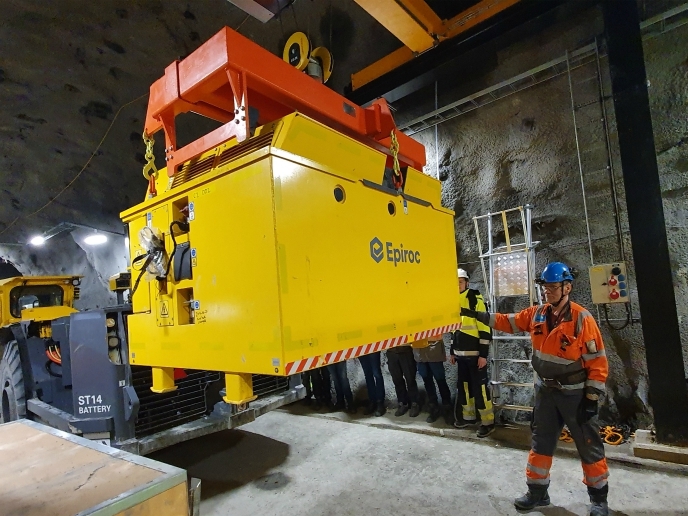Robotics, automation and 5G go underground
Our rocky planet is a treasure trove of valuable commodities, including minerals and metals used by sectors as varied as automotive, aerospace, chemicals, construction, electronics and renewable energy. The mining sector is the bridge between these raw materials and industry and is thus critical to the world’s economy. The EU is taking decisive action to reduce its dependence on imports of these materials and enhance supply chain security. Within this context, improved mine worker safety and reduced environmental impact of mining are key pillars. The EU-funded SIMS project brought together the world’s leading mining companies, universities and technology suppliers to deliver intelligent mining systems that meet these important challenges.
Blazing a trail
A few years ago, the mining industry began formulating a technological roadmap of where the industry should be within 10 years. In response to the challenges, SIMS delivered a wealth of new technologies related to digitalisation, robotics and automation to promote safer mines, fewer atmospheric emissions, less land and water pollution, and higher efficiency. According to project coordinator Jan Gustafsson, of Epiroc: “SIMS is a pioneering project in the mining sector. Within 3 years, our team created multiple demonstrators of these envisioned technologies, proved them in real mining environments, and advanced them as industry standard technologies.”
Towards an ‘Industrial Revolution’ in the mining industry
The third Industrial Revolution, also known as Industry 3.0 as more commonly applied to factories, witnessed the integration of electronics, telecommunications, computers and robotics into operations and processes. SIMS has created just such a movement in the mining sector with sustainable intelligent mining, focused on the automation of key operations such as driving, inspection, blasting and material handling. Numerous battery-powered machines were developed and verified in a real mining environment. A new generation of battery-operated all-electric vehicles and the infrastructure for battery charging and handling were created to replace conventional diesel fleets. The vehicles are bustling about and the working environment for miners is substantially improved thanks to less diesel particulate matter, noise and vibration. A literally groundbreaking controlled seismic de-stress blasting method together with improved installation of rock bolt and mesh (rock reinforcement) increased installation efficiency by 64 % and significantly enhanced miner safety. Autonomous aerial inspection of mines and a vehicle-mounted real-time imaging system for crack detection were also successfully demonstrated. Automation and robotic control in the underground isolation of a mine is no easy task. The team developed and tested a 5G-enabled industrial communication network to connect people, data, sensors and machines, including remote-controlled mining machines. Even ventilation can be controlled via the 5G network based on sensors in the mine. Finally, the team created two virtual reality environments: one for personnel training, and another for raising public awareness and enhancing social acceptance.
Enhancing efficiency and creating safer, more sustainable mines
Gustafsson concludes: “SIMS has demonstrated that the further digitalisation, automation and use of robots in the mining industry will contribute to enhanced safety, higher efficiency and less harm to the environment.” Moving the industry towards sustainable mining while unlocking the potential of mineral reserves and simultaneously creating ergonomic and safe workplaces should improve public acceptance and trust.
Keywords
SIMS, mining, automation, robotic, 5G, safety, all-electric vehicles, rock, inspection, blasting, sensors, rock bolt, virtual reality







